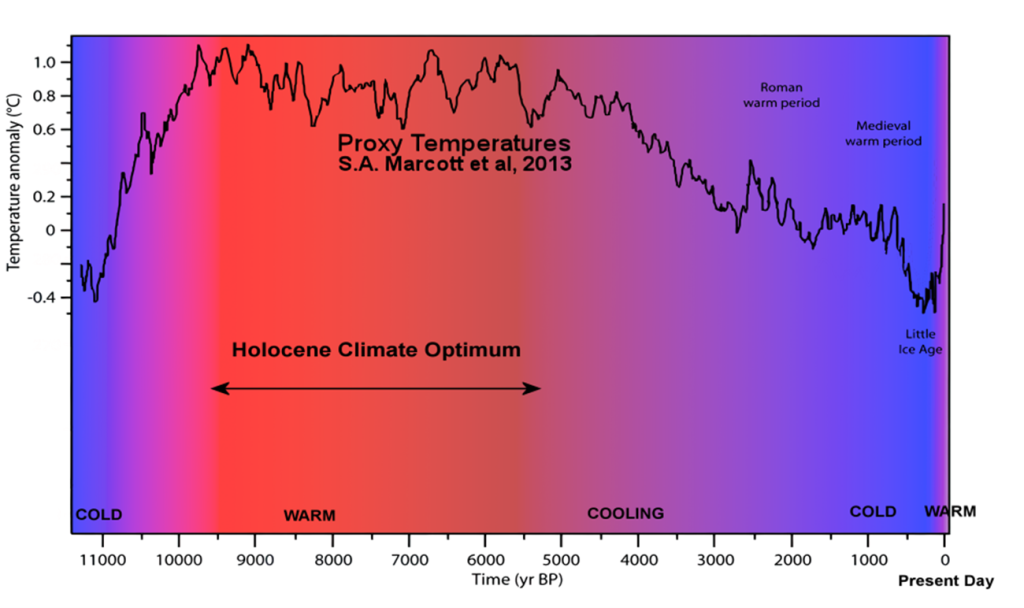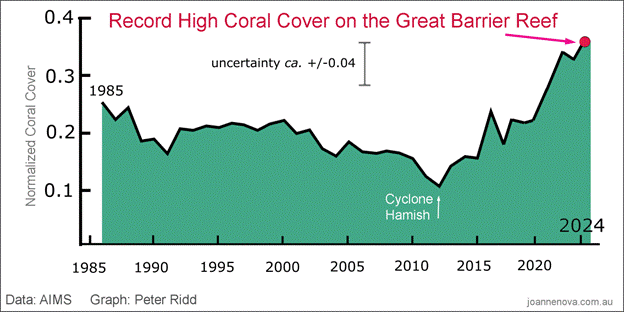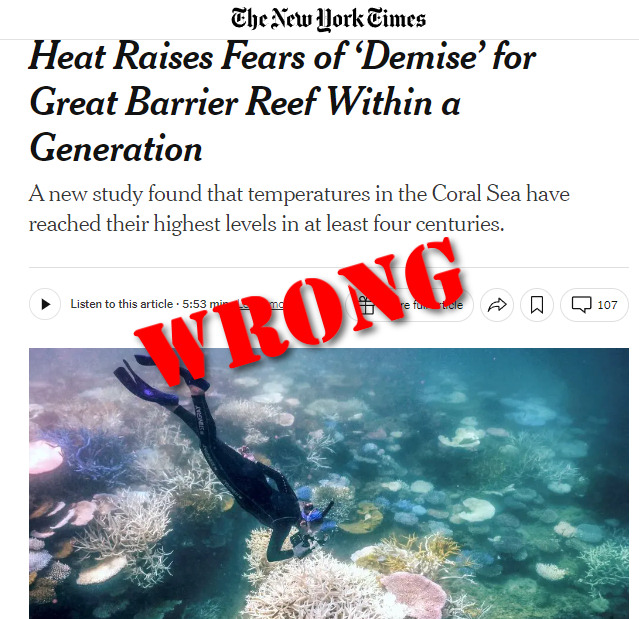An August 7th article in The New York Times (NYT) titled, Heat Raises Fears of ‘Demise’ for Great Barrier Reef Within a Generation claims recent warm ocean temperatures could be catastrophic the Great Barrier Reef (GBR) within 30 years. While there may be a kernel of truth to the temperature data, the claims of the GBR’s demise are false and ignore temperature history and the GBR’s development going back thousands of years.
The article claims:
This generation will probably see the demise of the Great Barrier Reef unless humanity acts with far more urgency to rein in climate change, according to scientists in Australia who released new research on heat in the surrounding ocean.
The Great Barrier Reef is the largest coral reef system in the world and is often called the largest living structure on Earth. The study, published on Wednesday in the journal Nature, found that recent extreme temperatures in the Coral Sea are at their highest in at least 400 years, as far back as their analysis could reach.
It included modeling that showed what has been driving those extremes: Greenhouse gas emissions caused by humans burning fossil fuels and destroying natural places that store carbon, like forests.
Claims of demise of the GBR due to climate change have been around for decades. Such claims usually invoke sea level rise (SLR), increasing temperature, or both. However, the truth of the matter is that corals thrive in warmer waters, and they deal with SLR effortlessly.
Australia’s GBR began forming in the early Holocene after 9,000 years ago, and the Holocene maximum sea level occurred around 5,000 to 6,000 years ago. The GBR’s Holocene evolution has been influenced by several factors, including sea level rise, tectonic deformation, and accretion rates.
Sea levels rose rapidly then, flooding the continental shelf by about 6–7 meters per thousand years until around 7,000 years ago. The coral kept up with the rate of SLR which is significantly faster than what is measured today. NASA satellite instruments, with readings dating back to 1993, show global sea level rising at a pace of merely 1.2 inches per decade, or 120 inches (3 meters per thousand years)
Coral evidence suggests that ocean temperatures at Heron Reef in the GBR were cooler than present around 5,200 and 7,000 years ago. However, other evidence suggests that a warm period known as the mid-Holocene Thermal Maximum occurred between 6,000 and 6,800 years ago, when the tropical ocean surface was about 1°C warmer than today. Figure1 below shows just how temperatures then compare with today.

As discussed in Climate at a Glance – Coral Reefs, coral has existed continuously for the past 60 million years, thriving amid and expanding their range in temperatures and carbon dioxide levels significantly higher than what the Earth is experiencing today, or any levels reasonably expected in the future. The primary reasons for coral bleaching events, which vary significantly depending on the time and location, include sediment and chemical pollution from nearby coastal lands, chemicals found in sunscreen (oxybenzone), fertilizer and nitrogen loading from agriculture, and cold temperature events. The argument that corals are being decimated by man-created carbon dioxide emissions is easily disproven by the available data.
Clearly corals in the GBR have survived temperatures and sea level situations far greater than what is being experienced today. The study referenced by the NYT article uses computer models to project the future of the GBR, but completely ignores the temperature and sea level history of the past.
But the final pushback against the claims of GBR demise come with the most current data. As pointed out here in Climate Realism just one month ago, despite what the media has been telling you the GBR is at its highest growth level ever, as seen in Figure 2 below.

To be clear, in recent decades, the GBR’s extent was lower, much lower, than at present when ocean temperatures were cooler, and it has grown considerably in the aftermath of bleaching events.
The worries of GBR demise don’t reflect actual data, the GBR’s history, and present experience at the reef. The threats exist only in the models, in the minds of the researchers, and the minds of the so-called journalists that push the idea. There is no evidence that climate change is worsening the health of the GBR. The resilience of the GBR serves as a reminder that nature is more adaptable and robust than we often assume. It was irresponsible for the NYT to publish this article, rife as it is with inaccuracies and misleading claims. But that seems to be par for the course in the media these days, ignoring history, context, and data to dogmatically push the climate catastrophe narrative.



















